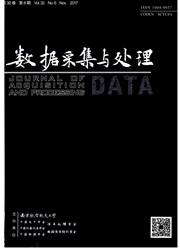

 中文摘要:
中文摘要:
现代医学步入计算医学时代.生物组织的病变往往导致其物理特性的变化,那么研究生物组织的物理特性变化对诊断生物组织病变与否能够提供参考.本文给出了已知生物组织部分边界位移信息、外部载荷、边界条件和有限元模型,利用遗传算法反求弹性模量的方法.首先将求解弹性模量问题描述成一个力学反问题,建立逆系统辨识的数学模型,并应用遗传算法原理建立生物组织弹性模量反求算法.利用仿真算例验证了算法的有效性,并结合图像识别技术试验获取对象部分边界位移信息,其中选取Log算子(σ=3)为实验中边缘检测使用的算子,选用双线性坐标变换公式进行影像内定向,最终反求其弹性模量,结果的相对误差为0.914%,证明了本文反求方法的可行性.
 英文摘要:
英文摘要:
Since pathological changes of biologic tissues cause physical changes, research of the physics of biologic tissues can provide references to diagnosis. A method for finding elastic modulus of biologic tissues is presented by using the genetic algorithm, given part of the boundary displacement, outer load, boundary condition and a finite element model. Solution to the elastic modulus is described as an inverse problem in mechanics. A mathematical model of the inverse system recognition process is established. Principles of the genetic algorithm are used to provide a solution to elastic modulus of the biologic tissues. The algorithm is verified with a numeric example. Parts of boundary displacement are obtained by combining image recognition. Log arithmetic operator is used for edge detection, and bilinear coordinate transformation formula is used for image interior orientation. The elastic modulus is solved with a relative error 0.914%.
 同期刊论文项目
同期刊论文项目
 同项目期刊论文
同项目期刊论文
 期刊信息
期刊信息
